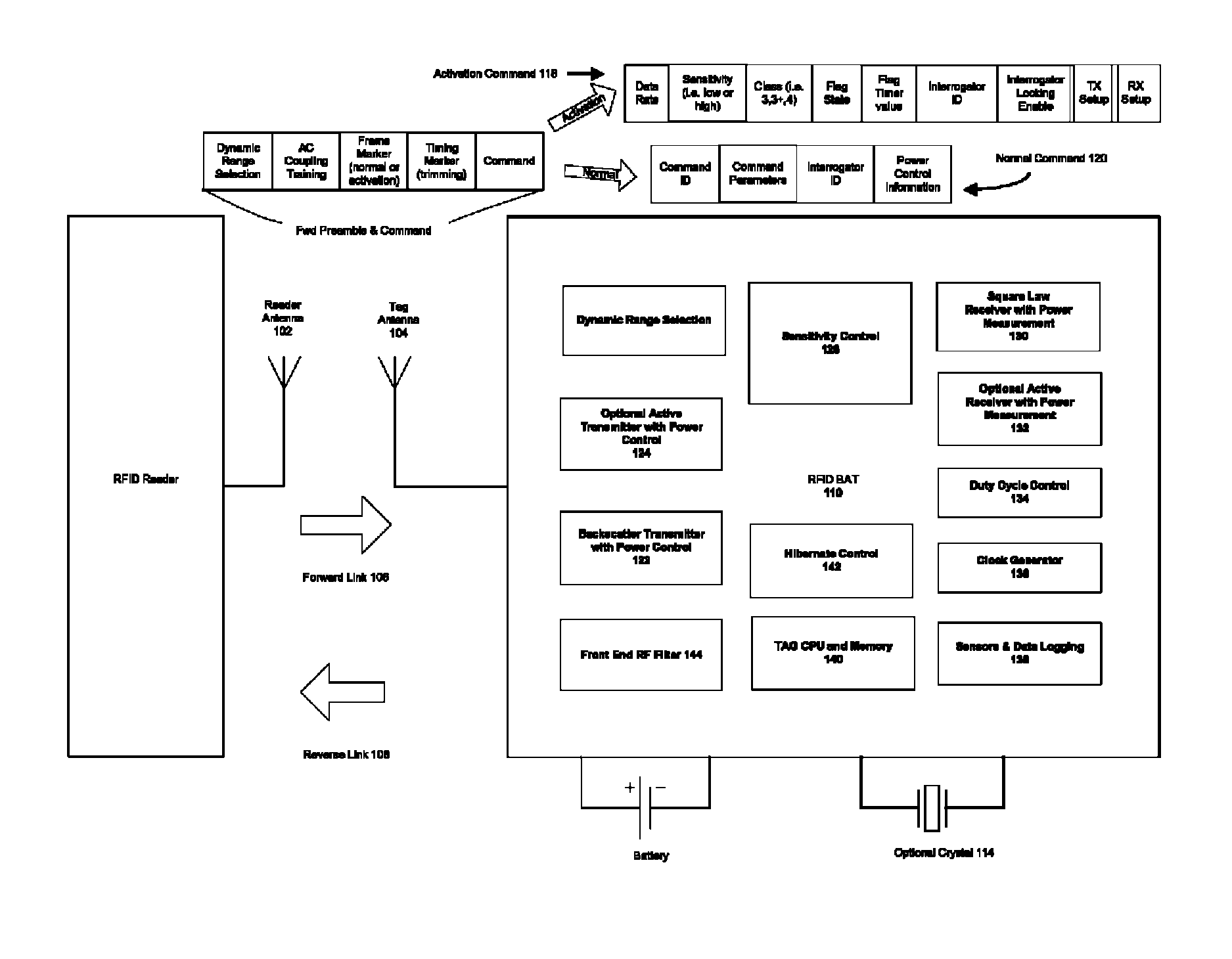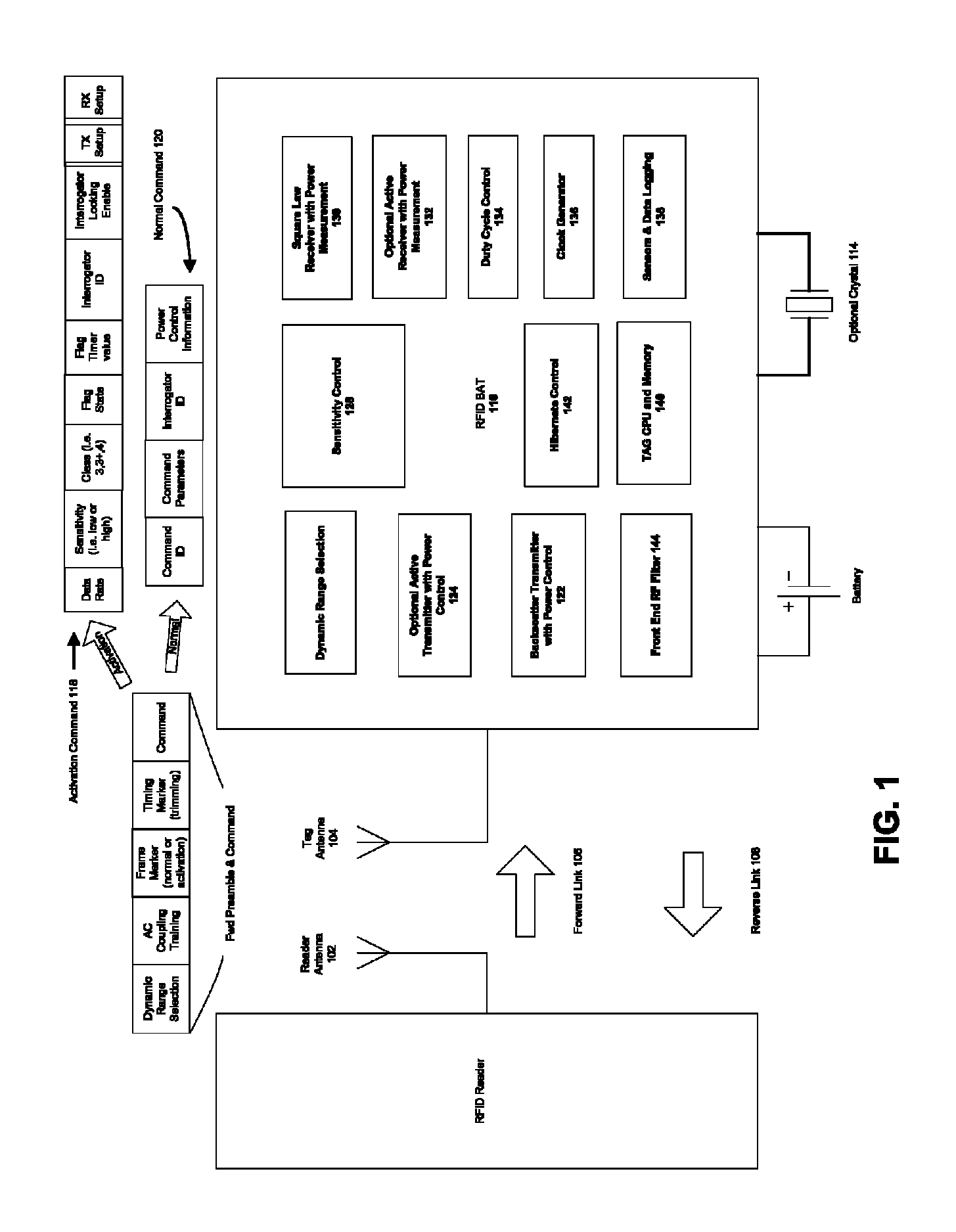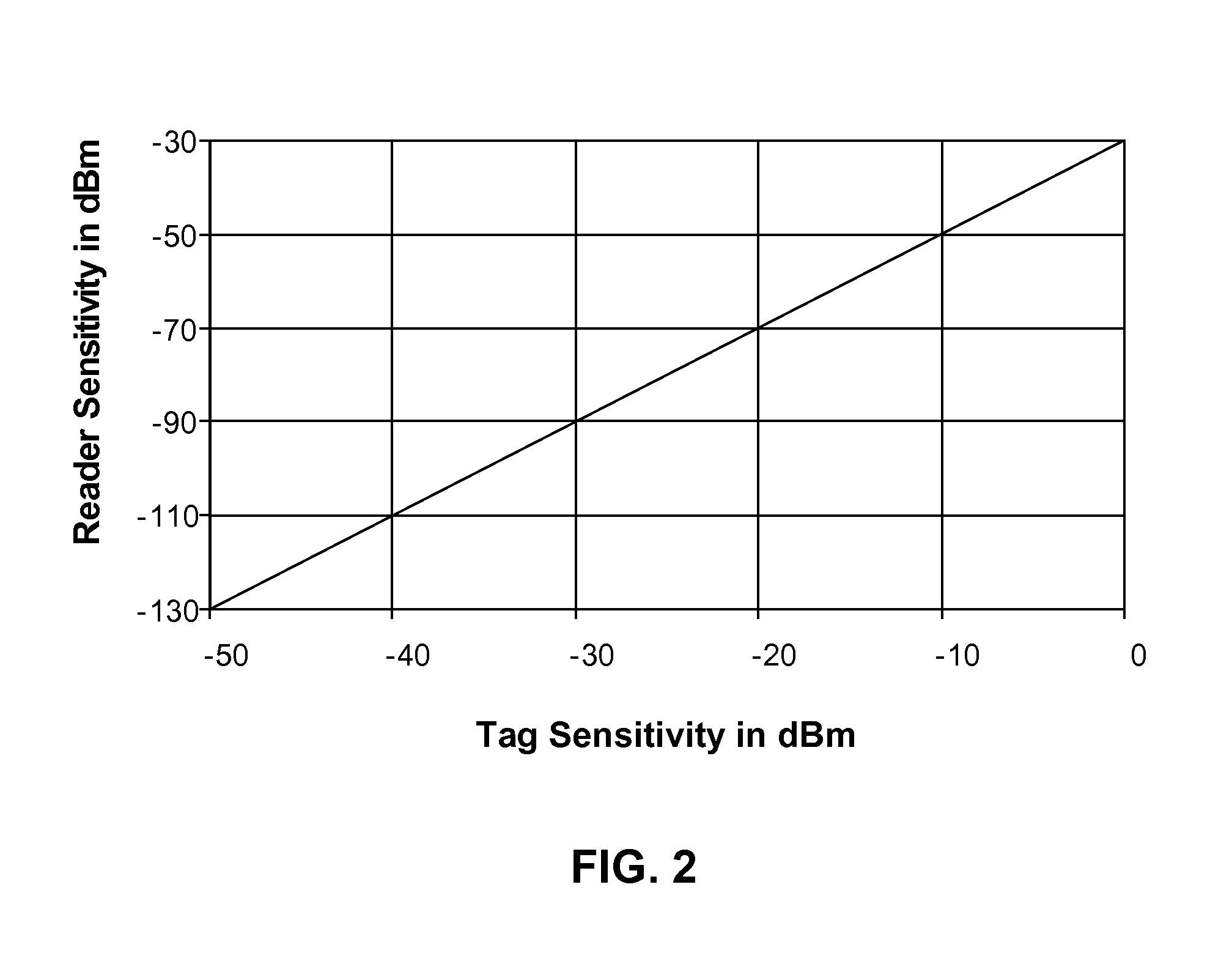Battery assisted RFID tag with square-law receiver and optional part time active behavior
- Summary
- Abstract
- Description
- Claims
- Application Information
AI Technical Summary
Benefits of technology
Problems solved by technology
Method used
Image
Examples
case 2
2. ACCIDENTAL WAKE-UP WHEN TOGGLING ON NOISE
[0332]By inspection,
[0333]RAon=(FlagRate)(RandomFlagProbability)=DRNflag2-2Nflag=DRNflag22NflagEquation49
[0334]Note that because Nflag is in NRZ format, there are two trials per NRZ bit to get a random matching Manchester bit, hence the factor of 2 on Nflag.
[0335]Substituting this relation into the basic equation for Fw (Equation 43):
[0336]Fw=IonTAonRAonIhib=IonIhibBDFDRDRNflag22Nflag=IonIhibBDFNflag22NflagEquation50
[0337]This equation may be rearranged as an inequality to use as an indicator of acceptable length for Nflag for negligible false wake-ups. When the below inequality exceeds 1.0, then the flag is of acceptable length.
[0338]Nflag22NflagIhibFwIonBDF=BLAF≥1Equation51
[0339]Now we may examine a particular cases of a high sensitivity receivers of −55 dBm with hibernate currents of 2 μA. Parameters assumed are:[0340]Ihib=2 μA (case 1) and 100 nA (case 2)[0341]Fw=0.01 (1% reduction in batte...
PUM
 Login to View More
Login to View More Abstract
Description
Claims
Application Information
 Login to View More
Login to View More - R&D
- Intellectual Property
- Life Sciences
- Materials
- Tech Scout
- Unparalleled Data Quality
- Higher Quality Content
- 60% Fewer Hallucinations
Browse by: Latest US Patents, China's latest patents, Technical Efficacy Thesaurus, Application Domain, Technology Topic, Popular Technical Reports.
© 2025 PatSnap. All rights reserved.Legal|Privacy policy|Modern Slavery Act Transparency Statement|Sitemap|About US| Contact US: help@patsnap.com



